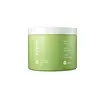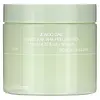What's inside
What's inside
 Key Ingredients
Key Ingredients

 Benefits
Benefits

 Concerns
Concerns

 Ingredients Side-by-side
Ingredients Side-by-side

Water
Skin ConditioningVitis Vinifera Fruit Extract
Skin Conditioning1,2-Hexanediol
Skin ConditioningMethylpropanediol
SolventButylene Glycol
HumectantSodium Citrate
BufferingPropanediol
SolventBetaine Salicylate
AntimicrobialPolyglyceryl-10 Laurate
Skin ConditioningPentylene Glycol
Skin ConditioningHydroxyethyl Urea
HumectantPanthenol
Skin ConditioningEthylhexylglycerin
Skin ConditioningPolyquaternium-51
Skin ConditioningTannic Acid
AstringentOenothera Biennis Flower Extract
AstringentPinus Palustris Leaf Extract
TonicPueraria Lobata Root Extract
HumectantUlmus Davidiana Root Extract
Skin ConditioningDisodium EDTA
Chlorphenesin
AntimicrobialCitrus Aurantium Bergamia Fruit Oil
MaskingLavandula Hybrida Oil
EmollientCupressus Sempervirens Leaf/Nut/Stem Oil
EmollientJuniperus Virginiana Oil
MaskingCitrus Aurantium Dulcis Peel Oil
MaskingCitrus Paradisi Peel Oil
MaskingLimonene
PerfumingLinalool
PerfumingWater, Vitis Vinifera Fruit Extract, 1,2-Hexanediol, Methylpropanediol, Butylene Glycol, Sodium Citrate, Propanediol, Betaine Salicylate, Polyglyceryl-10 Laurate, Pentylene Glycol, Hydroxyethyl Urea, Panthenol, Ethylhexylglycerin, Polyquaternium-51, Tannic Acid, Oenothera Biennis Flower Extract, Pinus Palustris Leaf Extract, Pueraria Lobata Root Extract, Ulmus Davidiana Root Extract, Disodium EDTA, Chlorphenesin, Citrus Aurantium Bergamia Fruit Oil, Lavandula Hybrida Oil, Cupressus Sempervirens Leaf/Nut/Stem Oil, Juniperus Virginiana Oil, Citrus Aurantium Dulcis Peel Oil, Citrus Paradisi Peel Oil, Limonene, Linalool
Water
Skin ConditioningDipropylene Glycol
HumectantGlycerin
HumectantButylene Glycol
Humectant1,2-Hexanediol
Skin ConditioningHouttuynia Cordata Extract
Skin ConditioningBetaine
HumectantChamaecyparis Obtusa Water
MaskingBetaine Salicylate
AntimicrobialMadecassoside
AntioxidantAsiaticoside
AntioxidantMadecassic Acid
Skin ConditioningAsiatic Acid
Skin ConditioningPolyglyceryl-10 Laurate
Skin ConditioningArginine
MaskingPolyglyceryl-10 Myristate
Skin ConditioningMelaleuca Alternifolia Leaf Oil
AntioxidantDisodium EDTA
Sodium Hyaluronate
HumectantEthylhexylglycerin
Skin ConditioningChlorphenesin
AntimicrobialLimonene
PerfumingWater, Dipropylene Glycol, Glycerin, Butylene Glycol, 1,2-Hexanediol, Houttuynia Cordata Extract, Betaine, Chamaecyparis Obtusa Water, Betaine Salicylate, Madecassoside, Asiaticoside, Madecassic Acid, Asiatic Acid, Polyglyceryl-10 Laurate, Arginine, Polyglyceryl-10 Myristate, Melaleuca Alternifolia Leaf Oil, Disodium EDTA, Sodium Hyaluronate, Ethylhexylglycerin, Chlorphenesin, Limonene
 Reviews
Reviews

Ingredients Explained
These ingredients are found in both products.
Ingredients higher up in an ingredient list are typically present in a larger amount.
1,2-Hexanediol is a synthetic liquid and another multi-functional powerhouse.
It is a:
- Humectant, drawing moisture into the skin
- Emollient, helping to soften skin
- Solvent, dispersing and stabilizing formulas
- Preservative booster, enhancing the antimicrobial activity of other preservatives
Betaine Salicylate is considered a salicylic acid alternative.
Limited studies exist proving this ingredient to be a complete alternative to salicylic acid. Based on existing research, this ingredient does not penetrate as deeply and is not shown to be as effective.
However, this makes it a great choice for those with sensitive skin or need gentle BHA action.
This ingredient is created using betaine and salicylic acid.
This ingredient is oil-soluble and is most effective at a pH range of 3.8-4.2.
Learn more about Betaine SalicylateButylene Glycol (or BG) is used within cosmetic products for a few different reasons:
Overall, Butylene Glycol is a safe and well-rounded ingredient that works well with other ingredients.
Though this ingredient works well with most skin types, some people with sensitive skin may experience a reaction such as allergic rashes, closed comedones, or itchiness.
Learn more about Butylene GlycolChlorphenesin is a synthetic preservative. It helps protect a product against bacteria in order to extend shelf life. In most cases, Chlorphenesin is paired with other preservatives such as phenoxyethanol and caprylyl glycol.
Chlorphenesin is a biocide. This means it is able to help fight the microorganisms on our skin. It is also able to fight odor-releasing bacteria.
Chlorphenesin is soluble in both water and glycerin.
Studies show Chlorphenesin is easily absorbed by our skin. You should speak with a skincare professional if you have concerns about using Chlorphenesin.
Learn more about ChlorphenesinDisodium EDTA plays a role in making products more stable by aiding other preservatives.
It is a chelating agent, meaning it neutralizes metal ions that may be found in a product.
Disodium EDTA is a salt of edetic acid and is found to be safe in cosmetic ingredients.
Learn more about Disodium EDTAEthylhexylglycerin (we can't pronounce this either) is commonly used as a preservative and skin softener. It is derived from glyceryl.
You might see Ethylhexylglycerin often paired with other preservatives such as phenoxyethanol. Ethylhexylglycerin has been found to increase the effectiveness of these other preservatives.
Limonene is a fragrance that adds scent and taste to a formulation.
It's found in the peel oil of citrus fruits and other plants such as lavender and eucalyptus. The scent of limonene is generally described as "sweet citrus".
Limonene acts as an antioxidant, meaning it helps neutralize free radicals.
When exposed to air, oxidized limonene may sensitize the skin. Because of this, limonene is often avoided by people with sensitive skin.
The term 'fragrance' is not regulated in many countries. In many cases, it is up to the brand to define this term. For instance, many brands choose to label themselves as "fragrance-free" because they are not using synthetic fragrances. However, their products may still contain ingredients such as essential oils that are considered a fragrance.
Learn more about LimonenePolyglyceryl-10 Laurate is an ester of lauric acid and Polyglycerin-10.
Polyglyceryl-10 Laurate is a cleansing agent and emulsifier. It helps gather dirt, oil, and other pollutants to be rinsed away. As an emulsifier, it helps prevent ingredients from separating, such as oil and water.
Polyglyceryl-10 Laurate may not be fungal acne safe.
Learn more about Polyglyceryl-10 LaurateWater. It's the most common cosmetic ingredient of all. You'll usually see it at the top of ingredient lists, meaning that it makes up the largest part of the product.
So why is it so popular? Water most often acts as a solvent - this means that it helps dissolve other ingredients into the formulation.
You'll also recognize water as that liquid we all need to stay alive. If you see this, drink a glass of water. Stay hydrated!
Learn more about Water